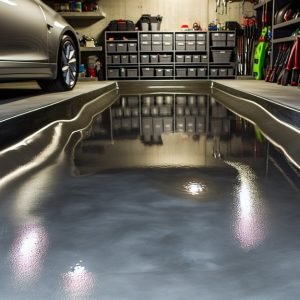Last Updated on October 30, 2025 by teamobn
So you’ve finally found your dream home! Right location, right size, right style and, hopefully, right price! Of course, you’re eager to close the deal, take possession and move in.
However, whether it’s a ‘fixer-upper’ or a seemingly pristine home, there’s one crucial step you will not want to neglect and that’s a comprehensive pest and building inspection.
A thoroughly detailed house inspection is one of the most critical stages of the home-buying process. A comprehensive check provides insightful analysis of the actual state of the house and could find possible issues you missed… issues that could be financially devastating if missed.
For buyers, a home inspection by a qualified inspector provided a safety net. It will identify any structural or maintenance issues that will require hard dollars to fix or rectify. Knowing any problems before buying will allow you to assess the potential costs involved. In turn, you can then try to negotiate a lower price with the vendor or to simply walk away to find the next opportunity!
Your house inspector will provide the vital information to ensure no unanticipated surprises once you close the sale, from verifying the foundation to assessing the roof. Here is how to thoroughly inspect the condition of a house.
Contents
Constructional or Structural Inspection
Check how old the roof is, and if it’s older, ask the seller to cover the cost of a roof certification. If the vendor is not willing to provide one, get your own. Have the roof inspected by a professional to determine its stability and condition.
Check whether the walls and ceilings are composed of plaster, rock lath, or another material. Verify if they are constructed from high-quality materials and assess the state of the ceilings and drywall walls.
Consider the house’s layout and floor plan, evaluate whether the storage space meets your demands, and see if the design permits the division of private and public spaces. It should be possible to arrange furniture in various ways thanks to the room plans and circulation patterns.
Remember to check the guest and personal parking spaces. Know what kinds of windows and doors are installed throughout the house. They should have appropriate weather-stripping and thresholds and be constructed of solid or panel type.
Assess the HVAC System
Inspections should start with a comprehensive evaluation of a home’s HVAC systems. Sort all HVAC equipment by age, kind, and location, including furnaces, air conditioners, and water heaters. Ensure every unit has enough clearances, ventilation, and maintenance-access points.
Test the airflow at vents and returns to guarantee proper distribution once the systems run. Check the equipment’s output of suitable heating and cooling with a thermometer. Look over ductwork for any leaks, disconnections, or contaminants.
The necessary air filters should be examined and replaced. Also note the state of the thermostats and controls. A combustion analysis should be done in houses with gas furnaces to check carbon monoxide levels and appropriate venting.
Any problems, including unusual noises, inconsistent performance, or old components, could point to HVAC component replacement or repair needed. An air conditioner repair may be necessary if the unit is not providing adequate cooling, while a furnace repair may be needed if the system is not heating properly. 
Radon Gas Inspection
One naturally occurring radioactive gas derived from uranium is radon. Mostly found in locations atop granite, this gas is rather dangerous for human health. Natural radon gas sources can gather in dwellings, particularly in confined spaces like basements and attics, and might compromise the tenants’ quality of life.
Given their normal fluctuations, radon levels should be tested for. Completing a test will expose you to rather high gas concentrations. Sealing concrete slab floors, water drainage systems, and basement foundations will help to limit the impact of a radon test coming back high.
Electrical System Inspection
Several important electrical system components should be assessed during a comprehensive home inspection. Locate the primary electrical service panel first, then make sure it has enough space for operations and capacity. Examine the panel’s interior for corrosion, exposed wires, or overheating.
Verify whether the panel is protected against ground and arc faults. Outlets should have their wiring and grounding checked throughout the house. Check for any installations representing a safety risk, such as exposed wire or open junction boxes. Check that the electrical equipment, such as water heaters and furnaces, has the appropriate clearances.
Take note of the different kinds of wiring and their state. Outdated aluminum branch or knob-and-tube wiring in older homes may need to be inspected. Check for sufficient electrical wiring and capacity in laundry rooms, restrooms, and kitchens. A qualified electrician should take care of any flaws or risks found.
Examine Plumbing Systems
Finding any current problems or possible hazards in a house depends on closely examining its plumbing system. Start by finding the primary water shutoff valve and ensure it runs as expected should an emergency arise. Examine the water heater’s condition and installation; consider its age, venting, size, and any leaks.
Look for any corrosion, leaks, incorrect support, or insufficient insulation as you inspect exposed supply and drain pipes all over the house. Water pressure should be measured at several outlets.
Check toilets, tubs, showers, and sinks for correct drainage, leaks, or other damage. Also, observe the state and operation of every showerhead, faucet, and mechanism. Look for leaks or dampness in basements and crawl spaces around drain pipes.
The sewage line of the house should be scoped using a camera to look for root infiltration, obstructions, or required repairs. Any major plumbing issue will probably call for replacement or repair by a licensed plumber.
Identify Flooring Issues
Look for various possible problems when looking over the flooring in a house. Search all floor surfaces for holes, cracks, stains, damage, or decay. Look for squeaks or too much bounciness that might indicate structural flaws below.
Be vigilant, particularly near bathrooms, kitchens, and outside doors, and carefully consider any indicators of moisture damage, including buckling, warping, or soft patches. Check changes between several flooring materials for lips, gaps, or incorrect installation.
Look for worn-out sections, stains, or smells that call for replacement; note the age and state of the carpeting. Hardwood flooring should be examined for flaws, including dents, fading, and incorrect finishing that can call for restoration. Look for broken, loose, or missing tiles on tile flooring that can provide trip hazards. Any notable flooring flaws should be recorded generally and may call for replacement or repair.
Endnote
Knowing what to look for during a house inspection will enable you to evaluate structural integrity, find hidden problems, and make wise decisions before purchase completion. Hire experts and apply contemporary inspection instruments to improve precision even more so that no significant detail is missed.






